Review: LG X venture for AT&T
Jul 6, 2017, 9:00 AM by Eric M. Zeman
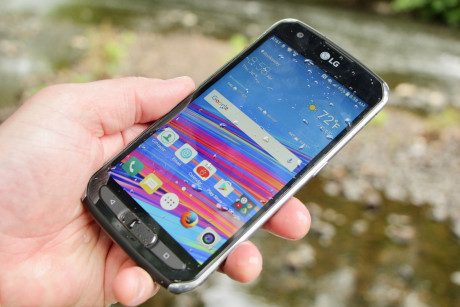
The LG X venture is a rugged, waterproof handset sold by AT&T. It packs mid-range specs, such as a 5.2-inch display, a Snapdragon 435 processor, and a 16-megapixel camera, into a fairly compact form factor for a hardy handset. More importantly, the X venture has a few neat tricks up its sleeve that make it an interesting addition to AT&T's lineup. Here is Phone Scoop's in-depth review of LG's rugged Android smartphone.
Hardware
Is It Your Type?
In need of a handset that handles the hard knocks of an active lifestyle? The LG X venture, sold by AT&T, is a rugged, waterproof phone that takes a beating while you're reading or tweeting. More importantly, it's affordable and amazingly compact for such a hearty device.
Body
The thing that surprises me most about the LG X venture, the Korean company's latest rugged handset, is its size. Many rugged smartphones are overly bulky, beset by chunky plastic and other thick materials to shore up their strength. The X venture looks and feels like any regular phone, and the footprint is hardly bigger than that of the LG G6 or OnePlus 5.
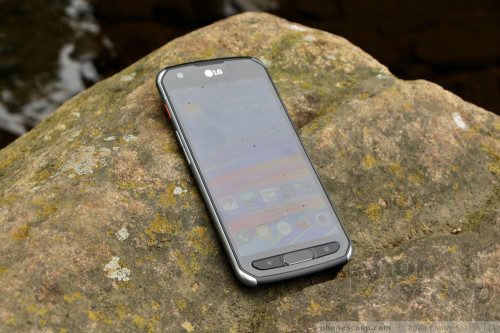
Rugged smartphones often share certain design characteristics, such as toughened corners, beefy frames, and grippy materials. The LG X venture eschews many of these for a simpler, thinner build. Metal rails, complete with exposed rivets, line the side edges and form only slightly thickened protective barriers at all four corners. Black plastic end caps stretch from corner to corner along the top and bottom edges. The rear panel has a rubberized surface with dimples to provide some texture. I like the juxtaposition of the bright metal and black plastics. The metal rails even have chamfers along the edges. A few other chrome-colored accents help some of the X venture's functional elements stand out and break up what might otherwise be a boring, monochromatic look.
The X venture is not a small phone, and yet it's certainly no huge phone, either. If you look at fully rugged smartphones from the likes of CAT or Kyocera, you'll see some big, big handsets that belong clipped onto your belt. The X venture isn't in that category. It's just a bit bigger than LG's own flagship, the G6, and it's noticeably smaller than something like the iPhone 7 Plus or Galaxy S8 Plus. At 6 inches tall and 3 inches wide, the X venture is a solid middleweight. Given the engineering necessities for ruggedization, I'll forgive the 9.1mm thickness. I can hold and use the phone one-handed most of the time, and only occasionally need to put my other hand to use. If you have small hands, the X venture might feel a bit big. The size doesn't get in the way of jamming the phone into your pockets, but the rubbery back surface sticks to pocket lining in an annoying fashion.
The materials are not what I expect from a handset in this category. Nearly every rugged phone I've ever tested has been clad in rubber-coated plastics from head to toe. The X venture's metal sides are a welcome departure. The plastics come across as tough and strong, and the assembly is tight enough to instill confidence in the phone's ability to handle punishment.
I'd call the X venture's face somewhat chaotic. There are lines, angles, and shapes all over the place. The phone actually has gently rounded corners, but the way LG shaped the metal rails over the shoulders makes the X venture look like it has angled corners (it doesn't.) The glass panel that protects the display reinforces the angled look with actual angles in the four corners. LG's logo is painted in chrome just below the earpiece.
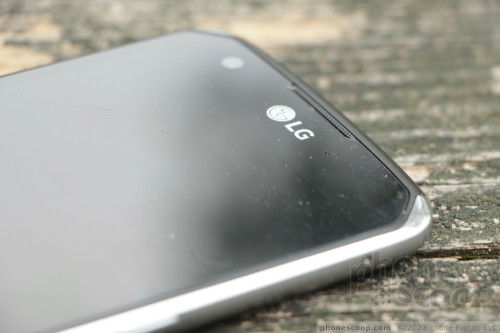
A cluster of hardware buttons line the X venture's chin. Hardware buttons are common on ruggedized handsets, as they're easier to use when wearing gloves. The cluster is encircled by the glass panel, so it stands out by visually and by feel. The home button doubles as a fingerprint reader. It's offset by a chrome rim and is fairly wide with a slightly coarse texture. Travel is minimal and feedback is a bit weak. LG placed a large back button to the left of the home button and an app-switcher button to the right. These keys have a rubbery texture that makes them instantly recognizable by feel. I don't care for the loud clicking sound these buttons make, but they work well enough.
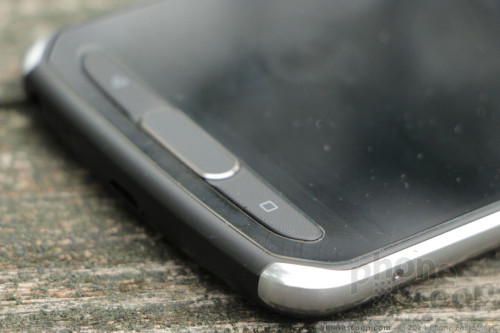
The phone's left edge is a busy place. Close to the top you'll spot the orange-colored hot key. Out of the box, the button launches LG's outdoorsy software suite, but you can assign it to something else. The button itself has a really rough texture that makes it easy to find and use. Travel and feedback are decent. LG dropped the volume toggle below the hot key. It's a flat affair with two halves separated by a small gap. The button is just large enough to help your thumb differentiate between the up and down directionals. Feedback is allright.
The X venture's screen lock button is the only thing on the right edge. I sort of feel bad for the button, as it's all alone. Thankfully, the button is easy to find and use, and it offers the best travel and feedback of all the phone's buttons.
I wish the X venture had a USB-C port on the bottom, but LG opted for micro-USB instead. A standard 3.5mm headset jack is located along the bottom as well.
LG wants you to know that the X venture's rear panel and the battery beneath cannot be removed. The phone ships with a stark sticker applied to the rear that says in plain words: "NON-REMOVABLE BATTERY--do not remove back cover or battery." Got that? The dimpled rubber surface provides plenty of grip, even when the phone is wet. Both LG's and AT&T's logos are stamped into the material directly.
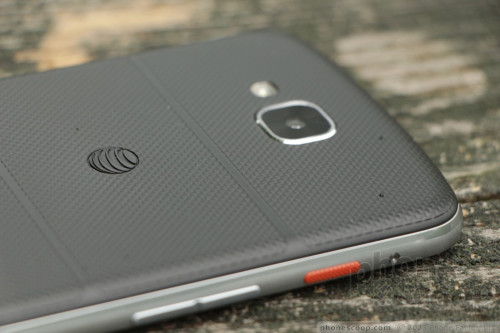
LG says the X venture meets IP68 ratings for protection against dust and water, as well as mil-spec 810G for physical abuse such as drops. I can report that the phone is truly waterproof. I let the phone spend some time in my pool as well as the bottom of my local river and it came away no worse for the wear. The phone can easily brush off a rain shower or accidental dunk in the tub.
The phone is definitely tougher than your average slab. The metal sides and rubber rear do their job in protecting the phone from the worst damage when dropped. I did a few test drops on my driveway, sidewalk, and on floors made of wood and ceramic tile. The phone came away unscathed. I am worried about the display, though; the phone's design does not include any sort of protective rim to prevent the screen from coming in direct contact with flat surfaces. That said, I think most people can be comfortable using the X venture without a case.
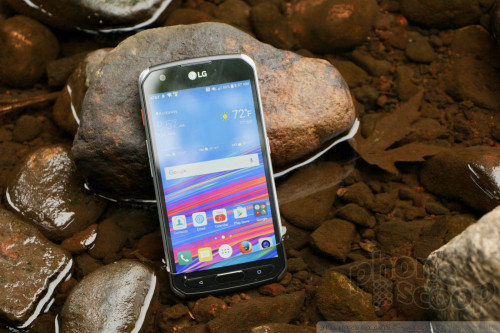
LG has designed and manufactured a rugged, waterproof handset that doesn't force owners to give up usability. The phone's average size makes it an appealing alternative to using a smaller phone with a thick case.
Screen
LG selected a 5.2-inch full-HD LCD panel for the X venture and it delivers a fine experience. The size and resolution are well matched and ensure that individual pixels are mostly invisible to your eyes. Text, icons, and graphics all look smooth along the edges. The LCD pumps out plenty of light. While I had no trouble using the phone indoors, the display's lack of oleophobic coating means the glass is besmirched by fingerprints and thus harder to see outdoors. Seriously, you need to hunt down shade when outdoors because the fingerprint grime is that bad. On a positive note, the screen supports glove mode, which allows you to interact with the display even when wearing gloves. I tested this feature and it works. Viewing angles are pretty good, though I did see some a drop in brightness when the phone was tilted side to side.
Signal
The X venture performed acceptably on AT&T's network in and around New York City, but it fell a little short when compared to some other AT&T phones I've tested recently. The radio remained attached to LTE most of the time, but dipped to 3G in some poor-coverage areas.
Data speeds were generally decent no matter the signal conditions. The X venture handled browsing media-rich social networks like Facebook and Instagram with no problem, though it gave me a little trouble streaming music and video over LTE.
Phone call connectivity was the most frustrating issue. The X venture sometimes missed calls in weak coverage areas, and dropped a few calls at highway speeds.
Sound
Voice calls are big on volume, but short on clarity. The earpiece pushes plenty of air into your ear, allowing you to hear calls just about anywhere you might take the phone. I had no trouble in noisy spaces such as coffee shops, malls, and the car. Calls were loud. Clarity is inconsistent. I noticed a distorted buzzing sound in the background during many calls. Some calls were free of the buzz, but most were not.
Sadly, the buzz carries over to the speakerphone where I heard the same background noise. The speakerphone does pump out lots of sound, however, making it a viable option in the car and so on. I wish the buzz weren't so noticeable, but it doesn't completely ruin calls.
People I spoke to through the X venture said I sounded "just okay." Ringers and alert tones are very loud, and the vibrate alert produces a strong buzz.
Battery
The X venture's battery game is on point. LG went big with a 4,100 mAh battery for the phone and it delivers big time. It's practically undrainable. The X venture easily coasted through two days on a single charge under normal use. On days when I pushed the GPS and other adventure software features to the limit, the X venture still forged through a day and a half before the battery saver kicked on.
The phone supports Quick Charge 2.0. LG claims you'll get a day's use out of a 50-minute charge and I'd say that's about right.
If you need a phone with amazing battery life, the X venture has you covered.
Bluetooth, GPS, NFC, WiFi
I didn't run into any issues with the phone's secondary batch of radios. For example, the Bluetooth 4.2 radio connected to headsets and speakers with no problems. Phone calls pushed through my car's hands-free system were about average in quality. Music sounded nice and punchy when streamed to a Bluetooth speaker.
The X venture's GPS radio located me quickly and accurately. The phone dialed in my location in 5 seconds or less, and accuracy was as good as about 25 feet. The phone worked well as a real-time navigation tool and had no trouble handling highway or city street traffic re-routes.
The NFC radio aboard means you can set up Android Pay if you wish. I found it helpful for pairing with some Bluetooth accessories.
The WiFi radio did a fine job.
Hankering for some good old FM radio? The X venture has you covered as long as you have headphones with you.
Software
Lock Screen
The X venture brings LG's unique software tools to the lock screen. KnockOn and Knock Code are what you'll find yourself using to wake and unlock the phone.
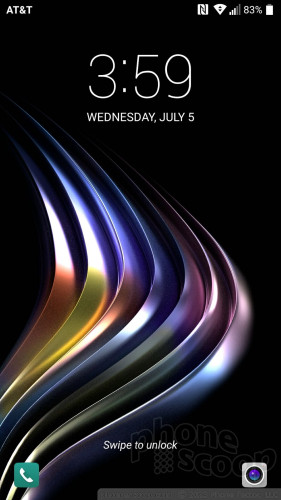
Double tap the screen to activate KnockOn and turn the display on. The lock screen reveals the clock/notification combo at the top of the screen in addition to shortcuts for the phone and the camera in the bottom corners. The lock screen clock is easy to read thanks to the large font. Users can fine-tune notifications for each individual app on the phone, which means plenty of control over what pops up in the screen, and when. KnockOn is most helpful when the phone is sitting on a table or desk.
KnockCode is a bit more personal. It's a security tool you can opt to use for waking and unlocking the phone in one step through a custom pattern of taps. LG's software walks you through the process of recording a pattern. It's easy to setup and use.
Security options include PIN, pattern, password, and fingerprint. The fingerprint reader on the front is easy to train. It takes about a minute to setup each print. I wish it were more accurate. I often had to touch the reader twice to get the X venture to recognize my print.
Home Screen
The X venture runs Android 7 Nougat with LG's usual tweaks. Upon first boot, you'll be besieged with AT&T and LG software, widgets, apps, and shortcuts. The level of AT&T garbage is super annoying. I found the DirecTV Now widget particularly egregious, considering the service costs at least $35 per month to use. Moving on…
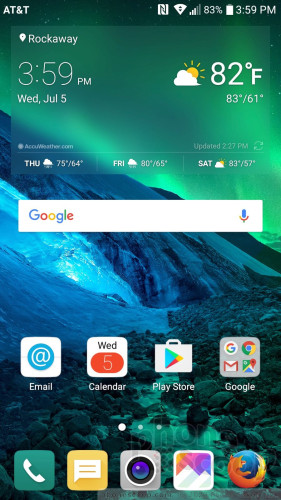
More phone makers are opting to create home screen experiences that don't include an app drawer. The X venture has an app drawer, but it is off by default. This means all the installed apps are in folders on the home screens. You can turn on the app drawer if you prefer a cleaner home screen experience. I appreciate that you can adjust the icon grid spacing (4x4, 4x5) on the home screen. This lets you make more effective use of the screen's real estate.
The LG app drawer, once enabled, is as powerful as ever. It allows you to hide apps you know you won't use often (like AT&T's garbage), and bring them back when needed. You can always sort apps to appear alphabetically, by frequency, or by install date.
LG included EasyHome with the X venture, which simplifies the user interface for those not used to a full Android experience.
The X venture lets you control screen transitions, fonts, font sizes, and more. There are a few themes on board, too, with more available for download.
The X venture supports split-screen multitasking, as well as miniaturized apps optimized for one-handed use.
The Quick Settings panel includes five toggles across the top, and a slide to control screen brightness. You can customize which toggles appear in the Quick Settings screen and swipe the toggles down to see more controls. The panel also allows you to manage notifications.
The main settings tools are broken down into several tabs by default, though you can adjust them so they appear on a single screen. I found the settings easy to use.
The X venture relies on a Snapdragon 435 processor with 2 GB of RAM and 32 GB of internal storage. Qualcomm's mid-tier processor does a fine job. The X venture never felt slow while I tested it.
Outdoor Essentials
Encompassed in a single app, the Outdoor Essentials includes a barometer, compass, activity tracker, exercise tracker, weather, and flashlight. These are all really simple, straightforward tools that simply display black text on a white background.
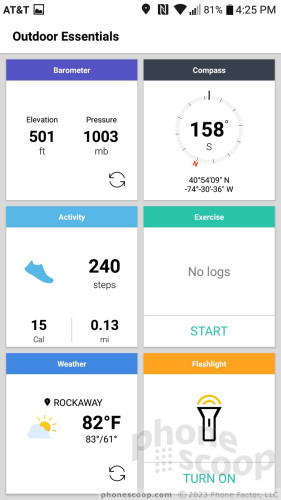
Tapping on any of the info panels in Outdoor Essentials opens a dedicated app so you can control settings or enter data manually. The barometer is all over the place and almost never had my altitude correct. The compass was as accurate as any phone-based compass can be. It found true north, but still managed to spin all over. The activity tracker and exercise recorder are essentially shortcuts to the LG Health app, which you can use to count steps and calories, set weight-loss goals, and so on. The weather app is pretty good, as is the flashlight, which has options for repeating patterns and even SOS.
You can find better versions of these tools in the Google Play Store, but I do like the dashboard approach to Outdoor Essentials which lets you see a screenshot of everything at once.
Camera
You can launch the camera with a quick double press of the volume-down button or the lock screen shortcut. You can also assign the hot key on the side to be a dedicated camera button. The app opens swiftly.
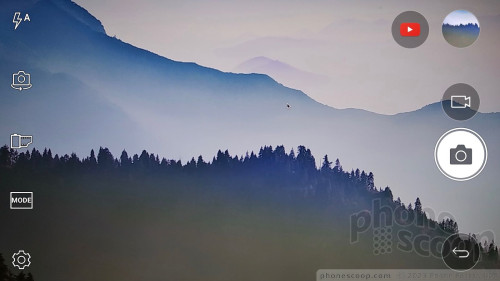
The camera interface is pretty straightforward. Several controls run down the left side of the main screen, such as the flash, user-facing camera, film effects (filters), and settings. The placement of these controls on the screen cannot be customized. The flash supports on, off and auto. The film effects are unhelpfully titled Film 1, Film 2, etc.
The X venture does not include any fun / advanced shooting modes. Panorama — the only major feature — is available under the mode button. The X venture lacks creative stuff like timelapse and slow-mo, (though third-party alternatives are available in the Play Store.) There's no manual mode, which is a real shame. HDR is buried the settings menu. By default, it is set to auto, but you can switch it to on or off. There's no under-water mode, but you can fire the shutter when the phone is submerged by using the volume key.
You can jump to the selfie camera by swiping in any direction on the screen (up, down, left, right.) The selfie camera has two modes: standard angle and wide angle. The wide angle stretches to 120 degrees, which lets you fit more people in the frame when you're in a tight spot. The selfie camera also includes a beautification slider and LG's selfie shot tool, which lets you snap a shot by making a fist gesture and then opening your hand (this starts a timer.) The selfie cam also includes a screen-based “flash” for shooting in darker spaces. You have to toggle it on or off; there's no auto setting.
Tap the screen to focus your shot, then tap the shutter button to capture the image. The X venture will focus without tapping the screen, but I found using the tap-then-shoot method produces much sharper pics. Like the LG K20 V I tested earlier this year, the X venture is a bit slow when it comes to the camera. I definitely wish it were faster.
Photos / Video
The X venture offers a weird set of resolution options. In order to use all 16 megapixels, you'll need to opt for the 16:9 aspect ratio. If you switch over to the 4:3 aspect ratio, you'll see the megapixel count cropped down to 12 megapixels. (Most other phones are the other way around.) Either way, the sensor is hampered by an f/2.2 lens that makes shooting in low light problematic. Daytime outdoor shots generally look fine, but taking images in the evening may not produce the results you're looking for.
Focus is often soft, exposure ranges all over the place, but white balance is acceptable. You can see in the sample below how underexposed the trees are despite the use of HDR. I'd shy away from using the X venture for important stuff.
The 5-megapixel camera captures good-enough selfies for Instagram and Snapchat where filters can mask the soft focus and noisy grain I saw in self portraits. The flash will help disperse grain if you're somewhere dark, though the soft focus is inescapable no matter what you do.
The phone can record video at up to 1080p HD. I was relatively pleased with the quality of the full HD footage. Exposure, focus, and white balance were all improved when compared to the camera.
Wrap-Up
The X venture from LG fills a little hole in AT&T's lineup. It's an inexpensive rugged handset that offers a reasonable level of performance for the dollar, making it a decent value for cost-conscious buyers.
The IP68 / mil-spec 810G-rated X venture can handle lots of soaking and a decent amount of abuse. It's a perfect companion for a day on the beach or in the woods. You'll find the rugged frame can brush off everyday drops and spills with no problem. I wish the screen were a bit easier to see outdoors, but you can't beat the battery life. Both voice quality and data speeds were not where I'd like them to be, but they should suffice for most users.
The software is capable, if a bit overwhelming. LG gives users so many options for customizing the Android experience that it might cause heads to spin. I have yet to meet a rugged, outdoor-focused handset that has a truly great camera and the X venture keeps that disappointing trend alive for now.
Who is this phone for? People who want a rugged phone with the best possible battery life. At $329 (or $11 per month), the LG X venture will keep you connected during your daring adventures.
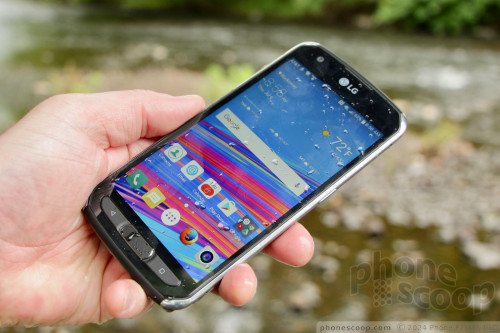
Comments
No messages


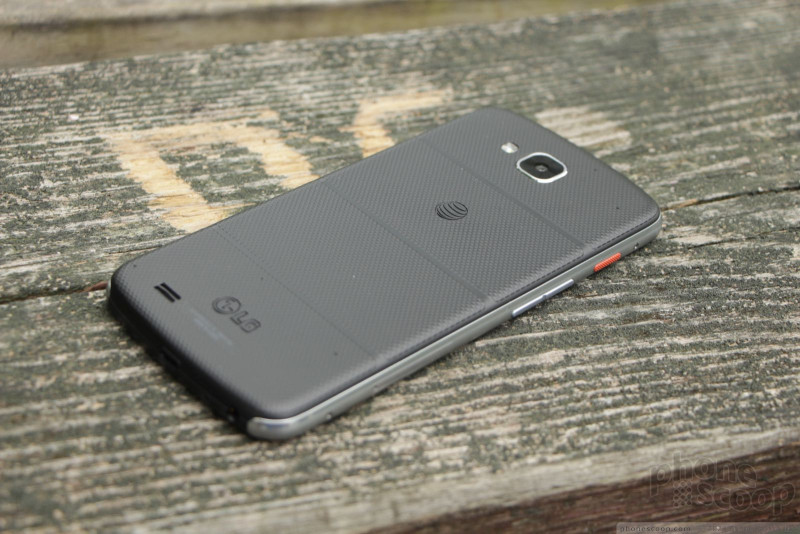

























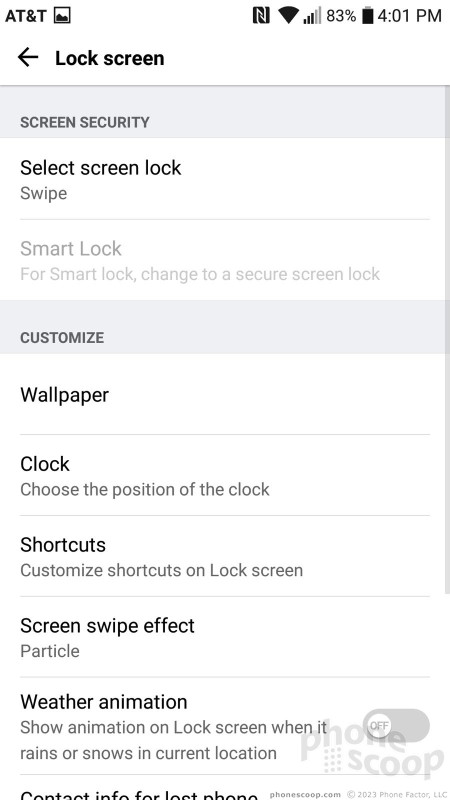





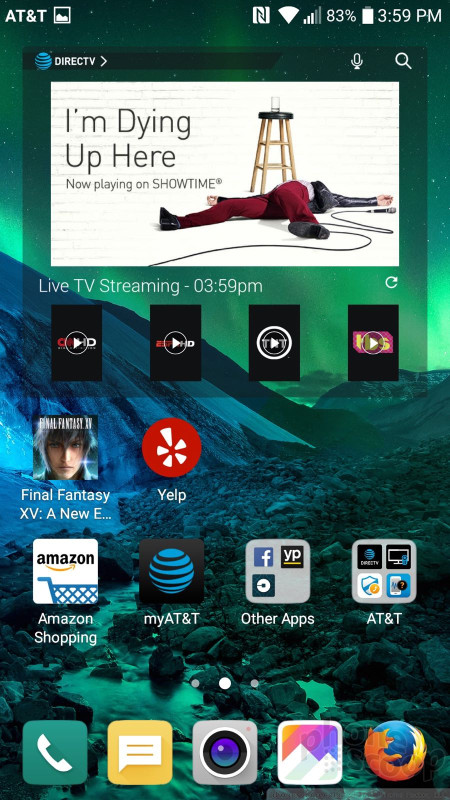






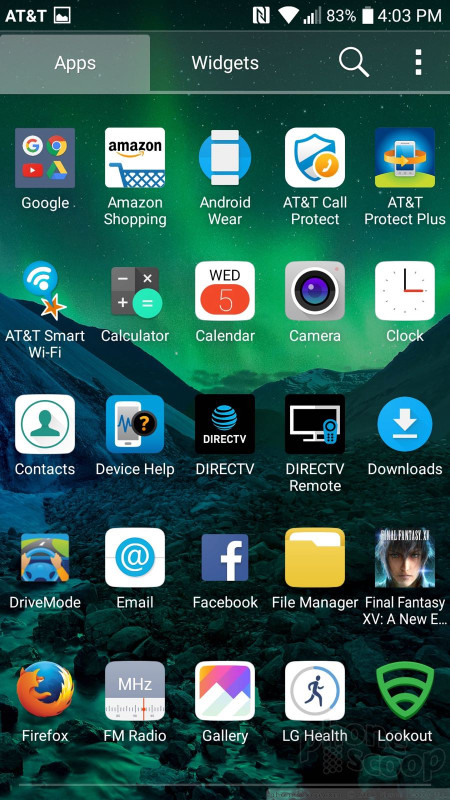




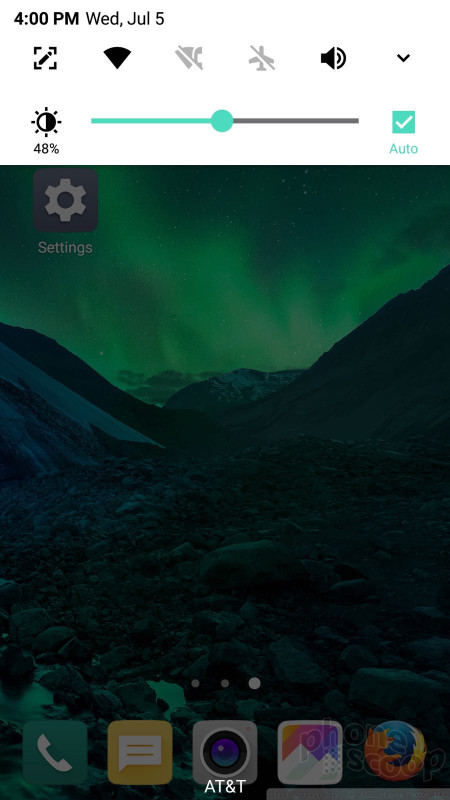




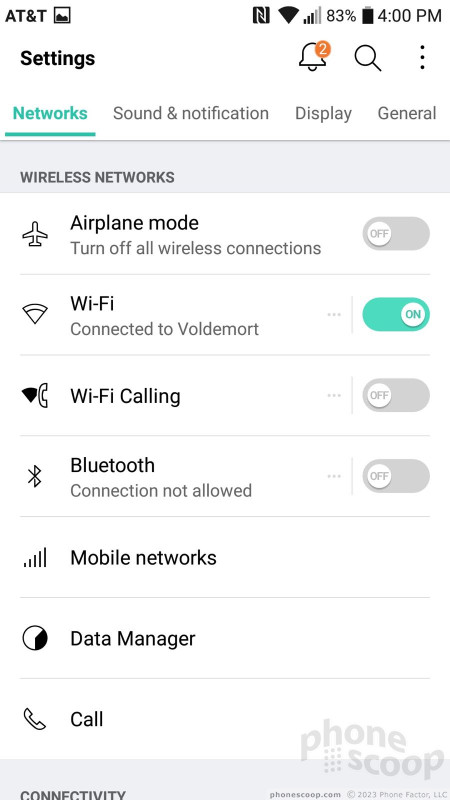




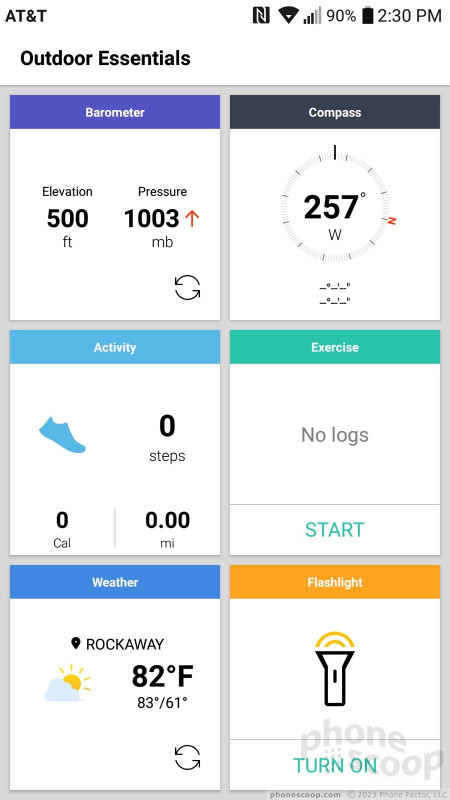








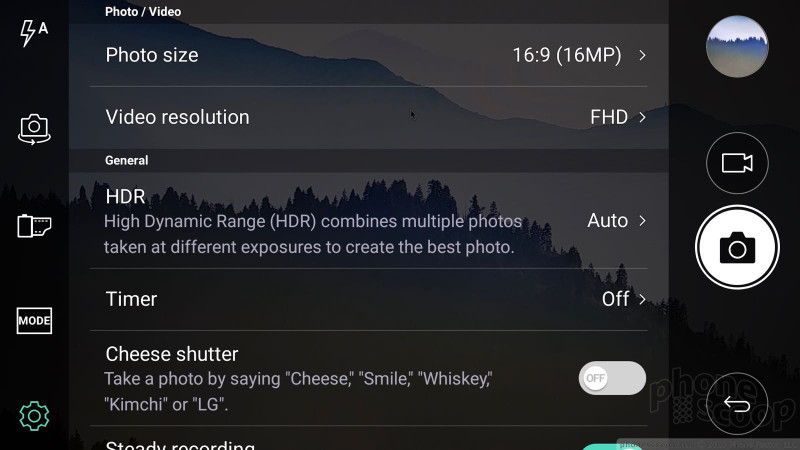





















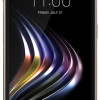 LG X Venture Delivers Inexpensive, Rugged Performance
LG X Venture Delivers Inexpensive, Rugged Performance
 iPhone 15 Series Goes All-In on USB-C and Dynamic Island
iPhone 15 Series Goes All-In on USB-C and Dynamic Island
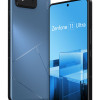 Asus Goes Big with Zenfone 11 Ultra
Asus Goes Big with Zenfone 11 Ultra
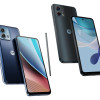 Motorola Updates its Most Affordable Phones
Motorola Updates its Most Affordable Phones
 LG X venture
LG X venture










